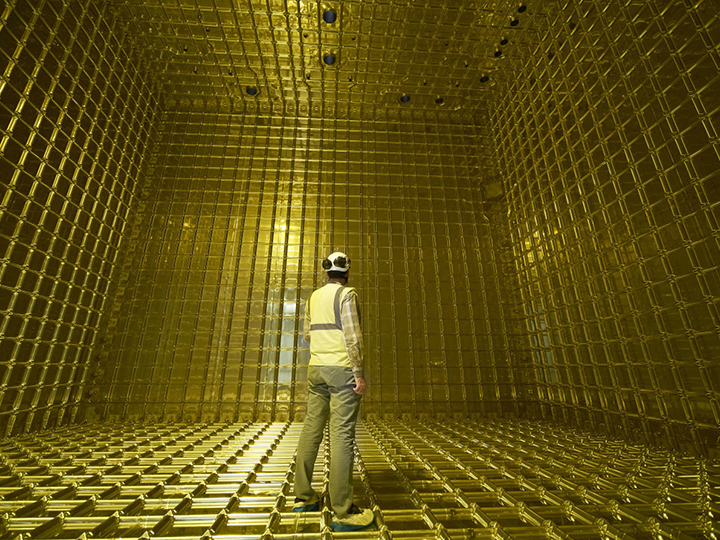Liquid Argon Detector Prototype is Producing Particle Tracks



The largest liquid-argon neutrino detector in the International Deep Underground Neutrino Experiment, known as DUNE, went online last month at CERN, the European Organization for Nuclear Research, in Switzerland. Since then, ProtoDUNE, a prototype for what will be a much bigger detector, has been recording particle tracks, and physicists all over the world are collecting the data.
Casandra Morris, a fourth-year doctoral student in the University of Houston College of Natural Sciences and Mathematics, has been at CERN since the summer. She was at the lab when ProtoDUNE went online and has been helping to collect the information produced by the experiment.
“The entire process of getting the detector up and running and seeing tracks was very exciting and, at times, nerve-racking,” Morris explained. “Once we began turning on all of the systems for the detector, it was all hands on deck. It’s a dream come true to be a part of a project this big.”
Scientists on the DUNE collaboration are trying to unlock the mysteries of neutrinos, the most abundant form of matter particles in the universe. Neutrinos are all around us. They have no electric charge. They can move through space, rock and even people without causing harm.
“The fact that we can actually see particle tracks means that our prototype detector is working,” said Andrew Renshaw, UH assistant professor of physics, whose specialty is liquid argon detectors. “By looking at the tracks, we can start to understand what particles made those tracks and ultimately how the detector responded to these different types of particles.”
The detector is the size of a three-story house and the shape of a gigantic cube. It holds 800 tons of liquid argon, which needs to be kept at -300 degrees Fahrenheit in order to maintain its liquid state and allow the particles to readily interact with it. But for the particles to properly be observed, the liquid argon must first be purified with a filtration system. That’s where Morris and the rest of the UH team come in. They helped develop and install the system that measures the purity of the liquid argon to ensure it is ready for data to be collected. The UH team also delivered the system that filters out noise from the detector’s power source.
“These tracks are meant to calibrate our systems,” Morris added. “We are not really doing any neutrino hunting now, just making sure that our design will be as good as we can get it to find neutrinos in DUNE.”
The technology used to construct ProtoDUNE will also be used for a DUNE detector that’s 20 times bigger and set to be installed in 2022 at the Sanford Underground Research Facility in South Dakota.
- Sara Tubbs, University Media Relations